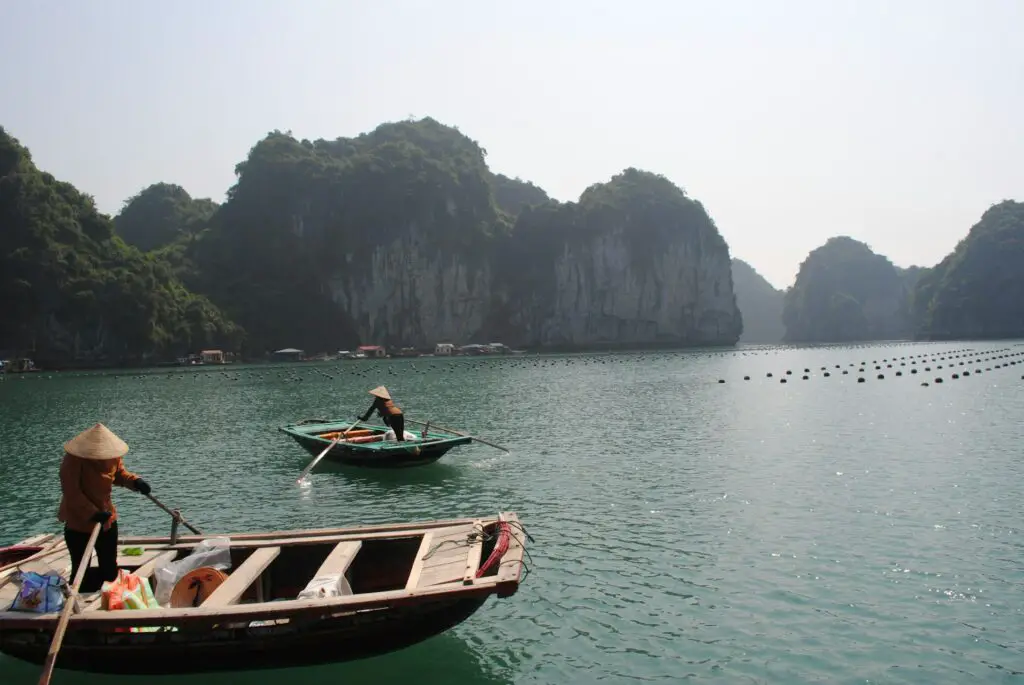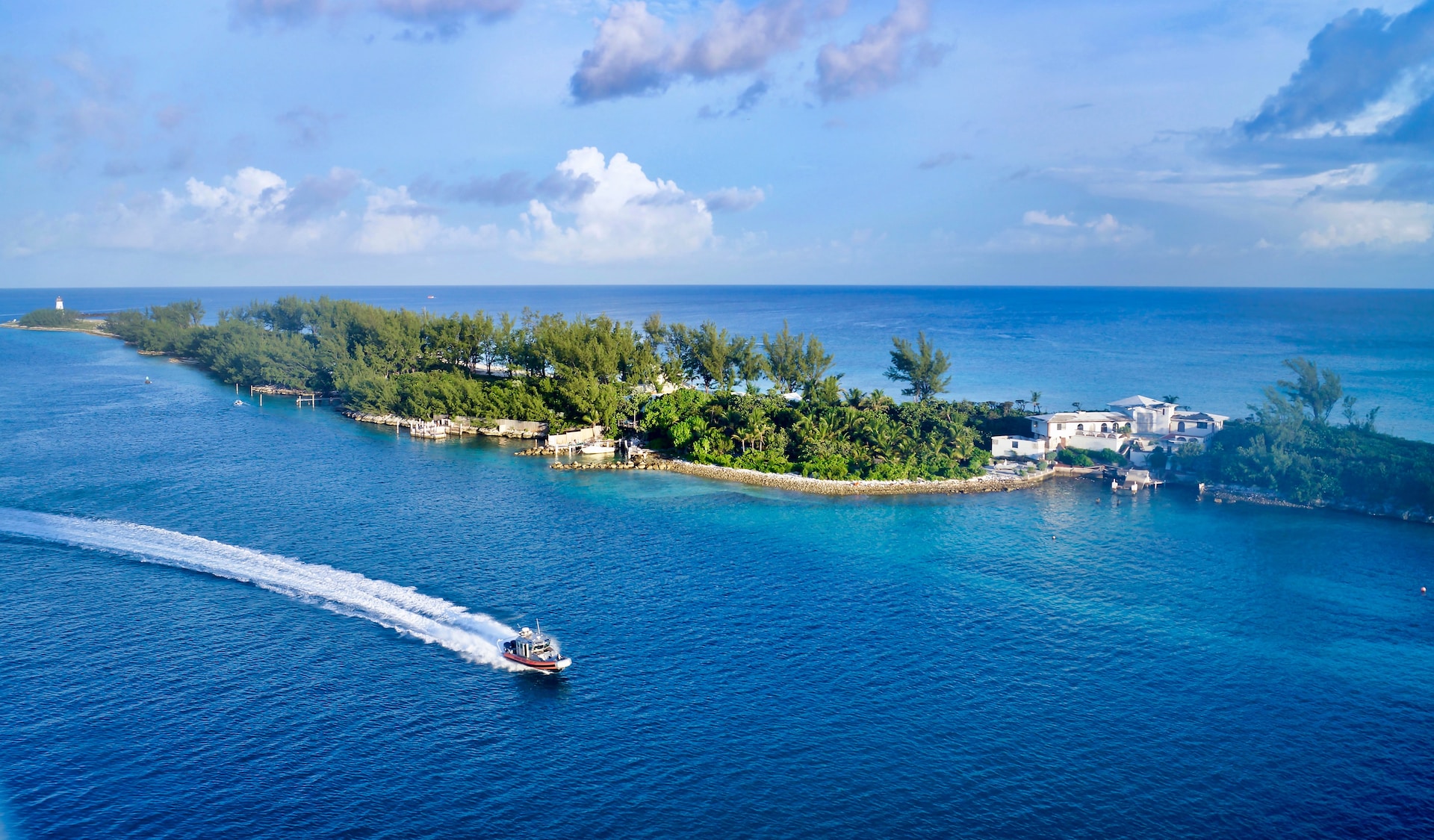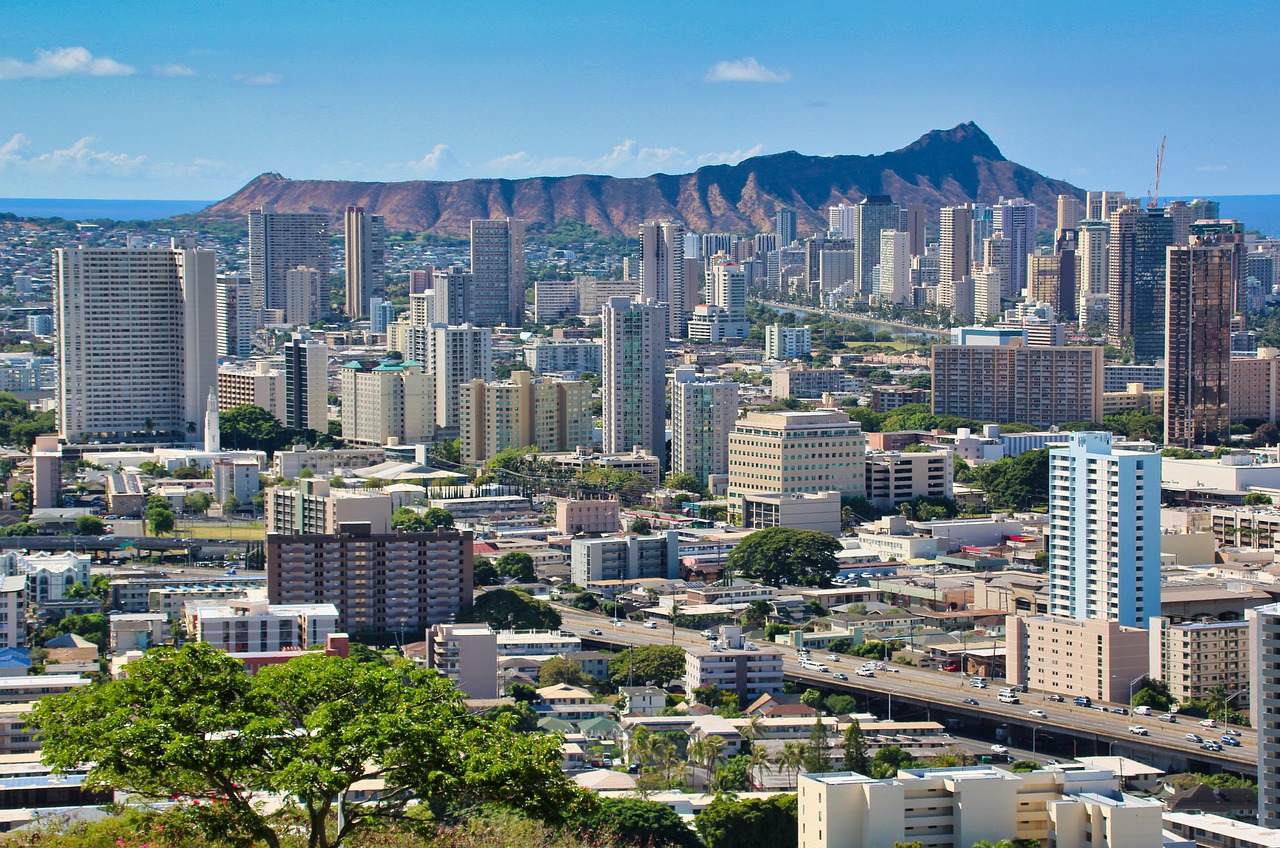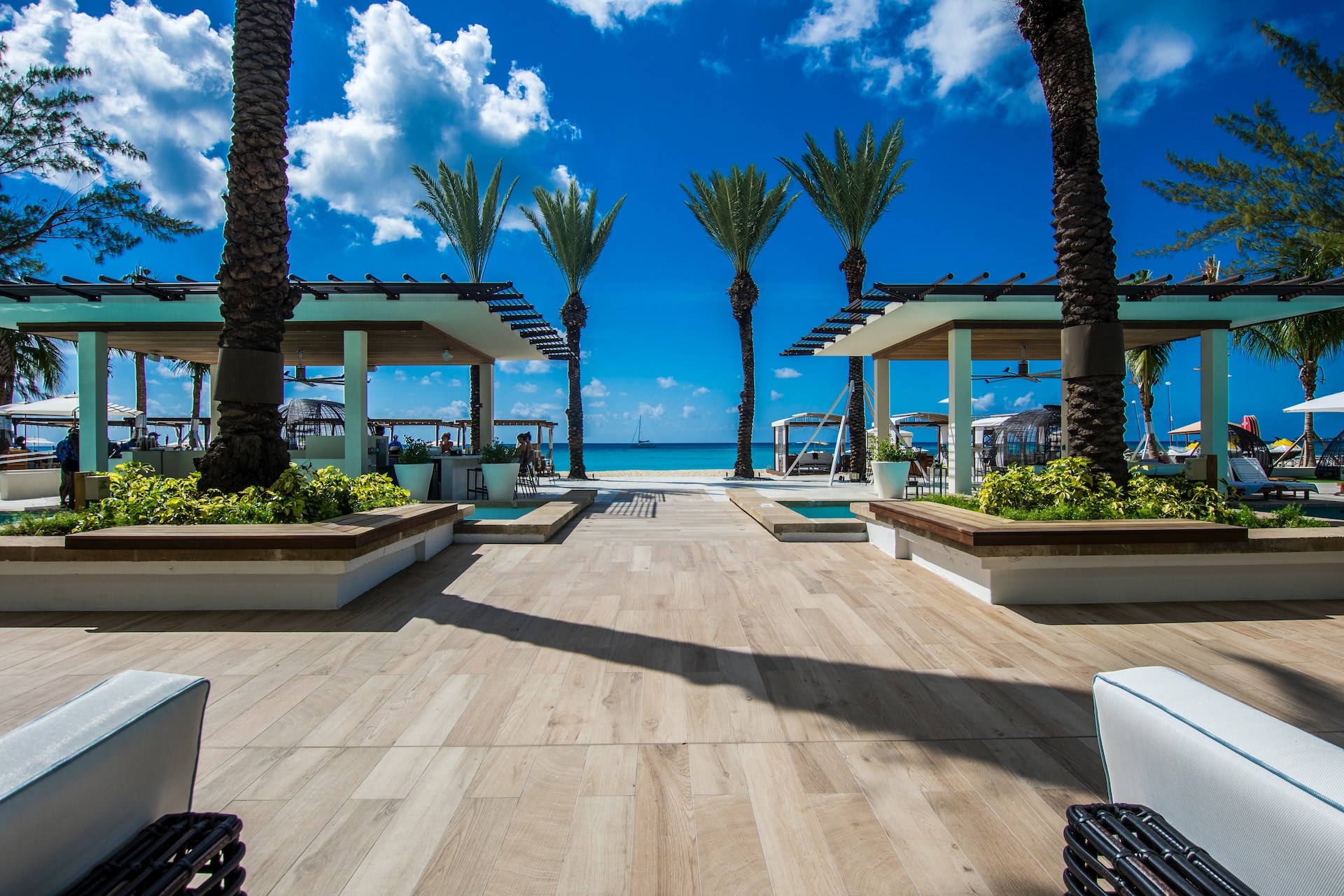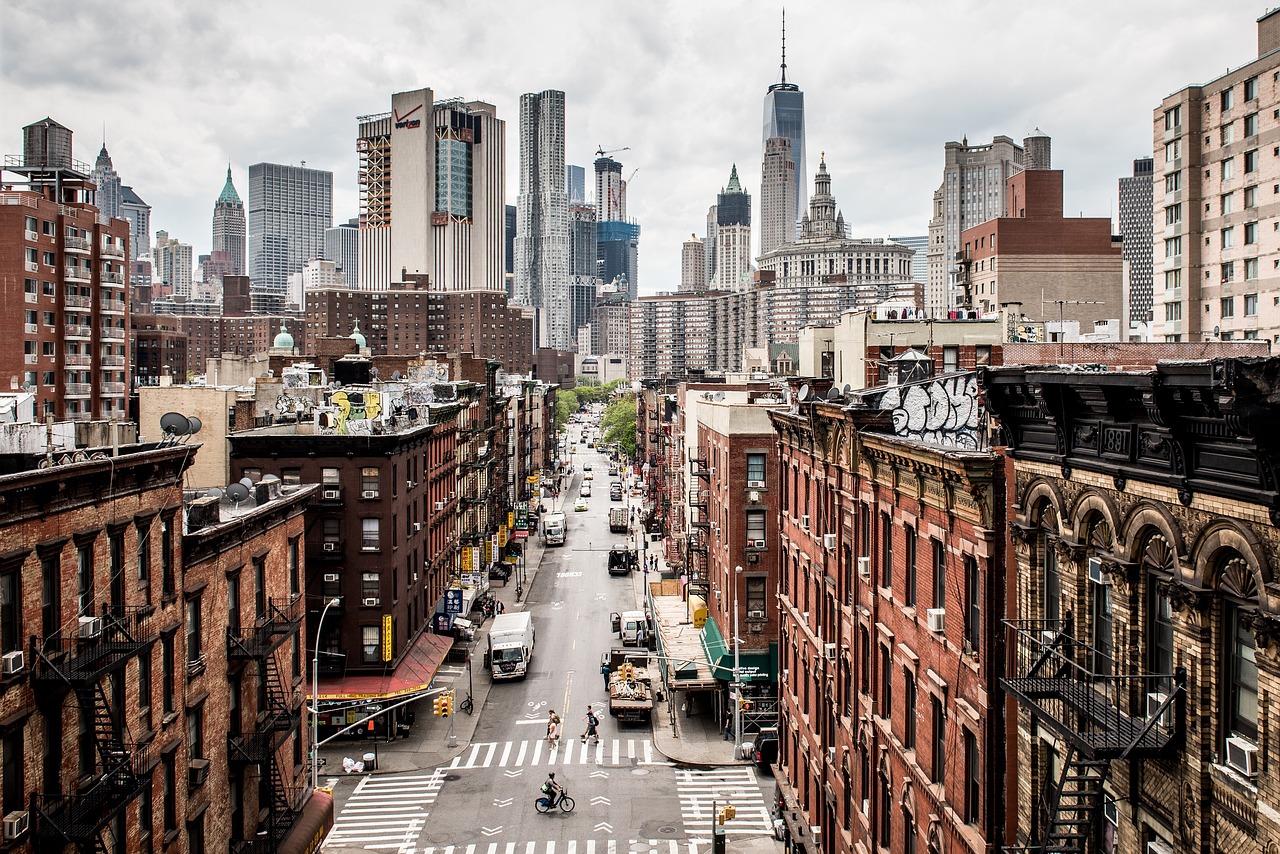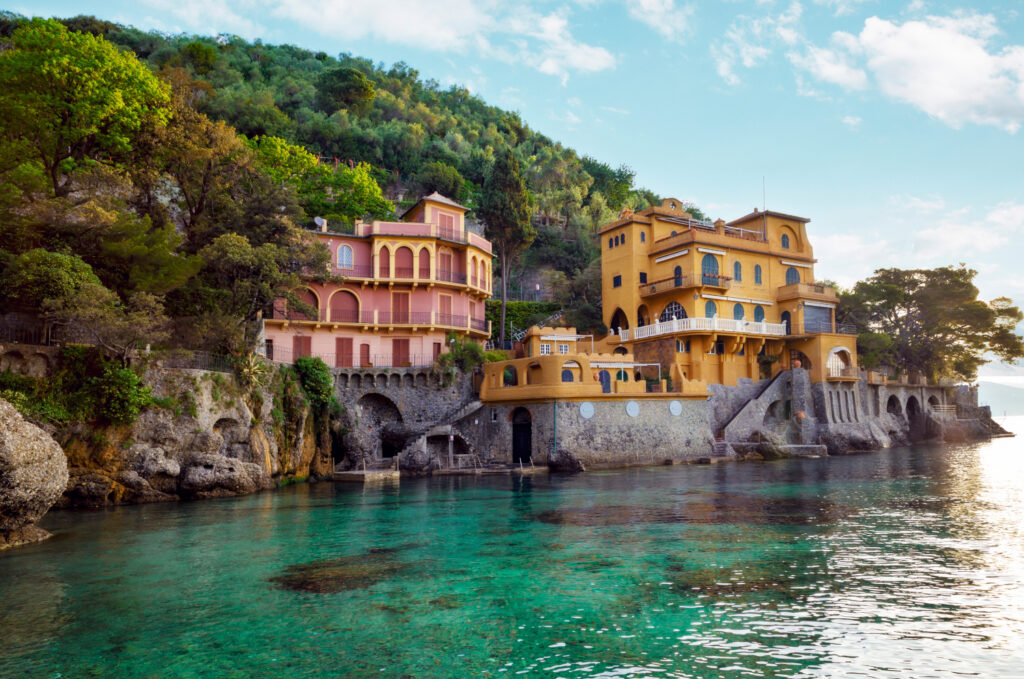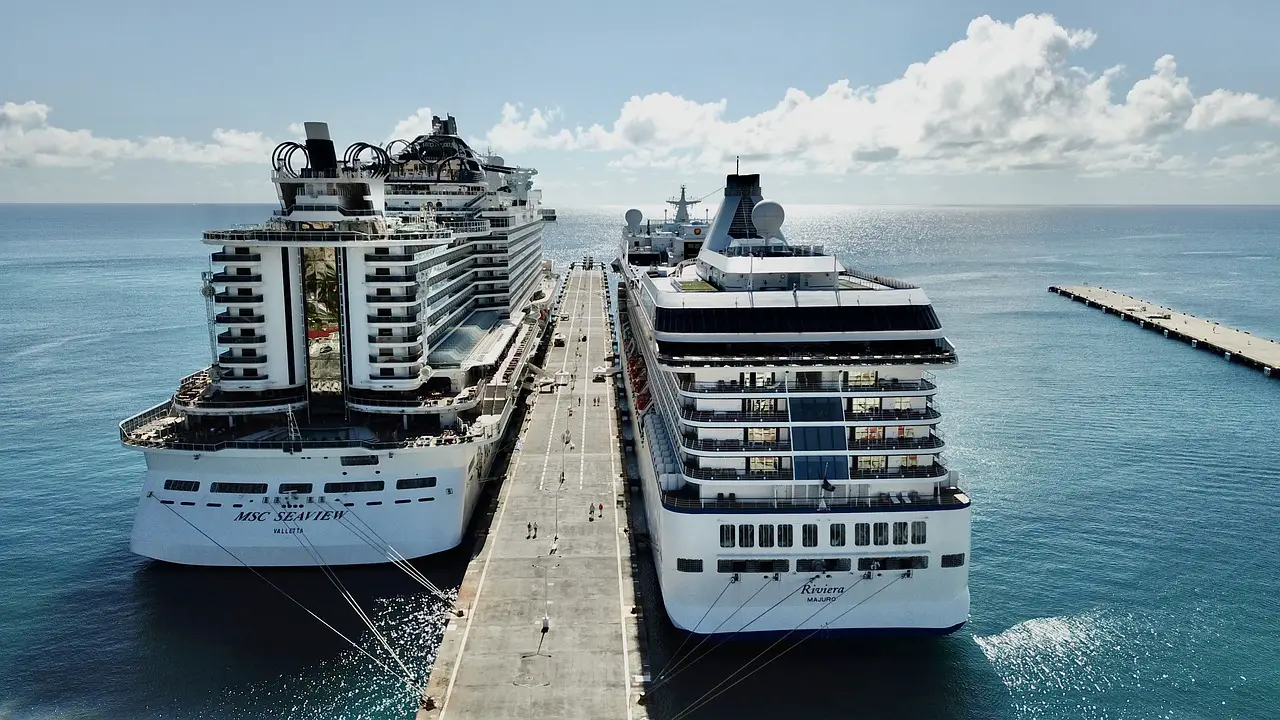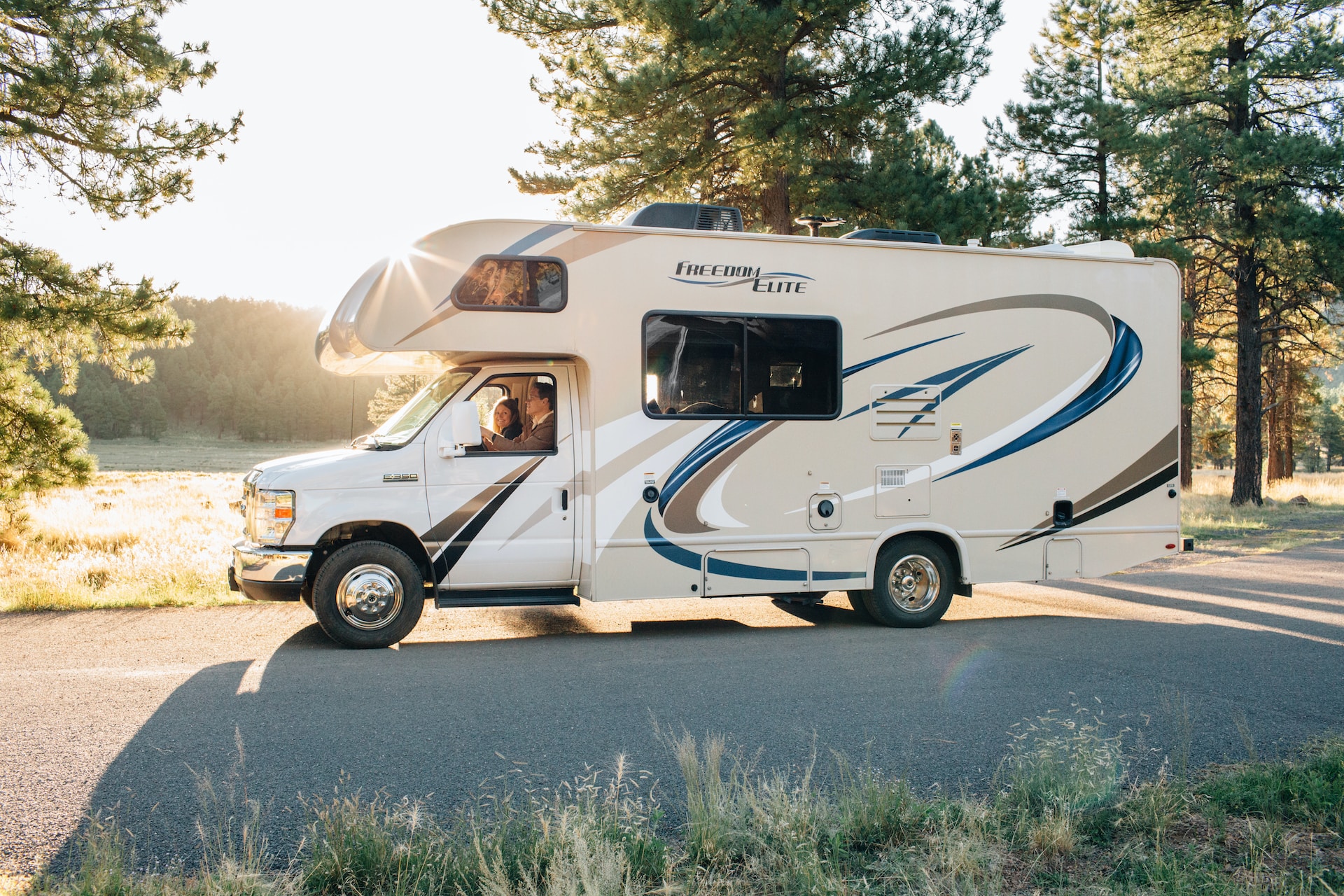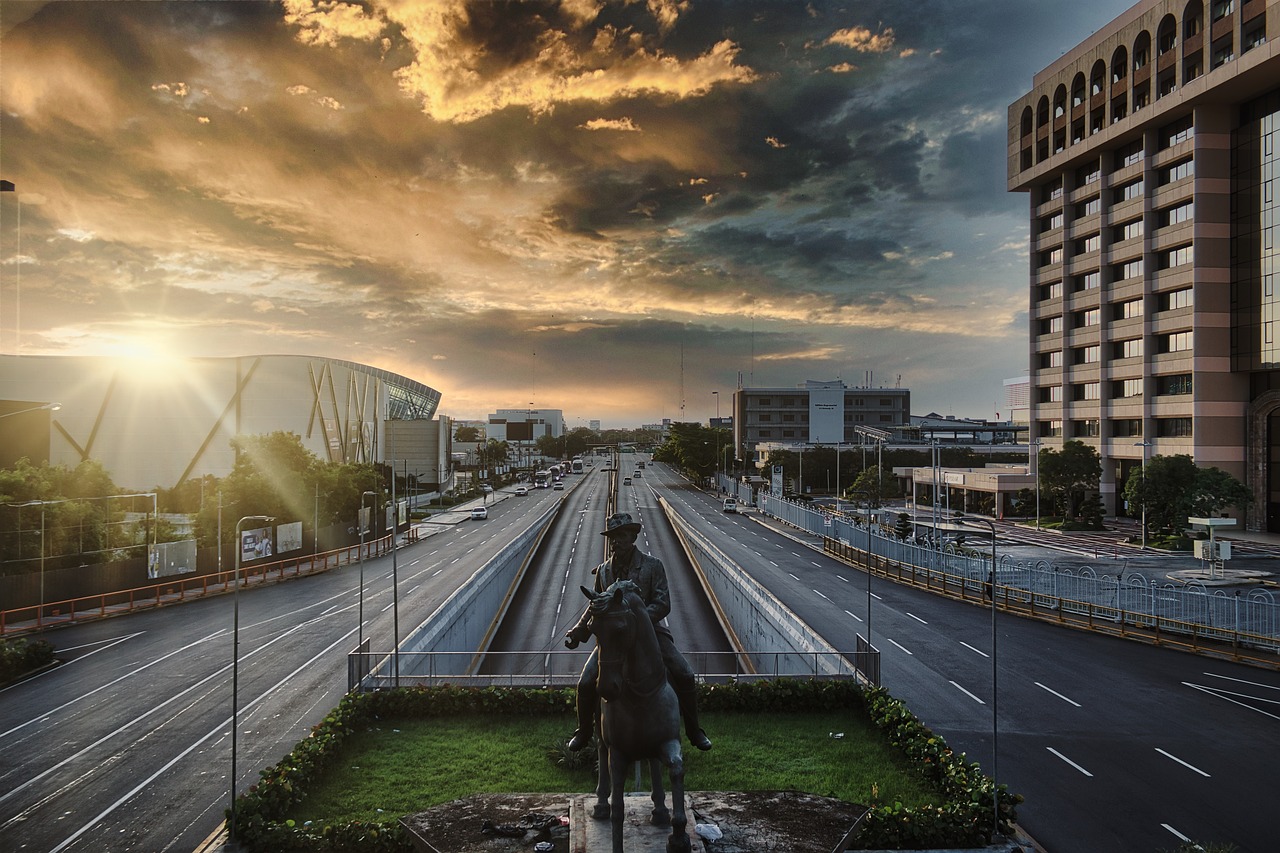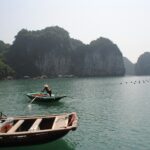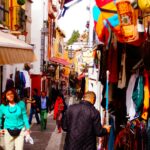Vietnam is a country that captivates with its rich history, vibrant culture, and stunning landscapes. From the bustling streets of Hanoi to the serene waters of Ha Long Bay, and the vibrant energy of Ho Chi Minh City, a week in Vietnam offers a whirlwind experience of its diverse charms. Here’s a perfect 1-week itinerary to make the most of your time in this fascinating country.
Day 1: Arrival in Hanoi
Morning:
Arrive in Hanoi, the capital city of Vietnam. After settling in at your hotel, take a stroll around Hoan Kiem Lake, the heart of the city. Visit Ngoc Son Temple, situated on a small island in the lake, to get a sense of the local culture.
Afternoon:
Explore the Old Quarter, where narrow streets are filled with vendors selling everything from street food to souvenirs. Don’t miss a visit to the Hanoi Opera House and the St. Joseph’s Cathedral for some beautiful French colonial architecture.
Evening:
Enjoy a traditional Vietnamese meal at a local restaurant. Sample dishes like pho (noodle soup) or bun cha (grilled pork with noodles). End your day with a water puppet show, a unique cultural experience that dates back to the 11th century.
Day 2: Ha Long Bay Cruise
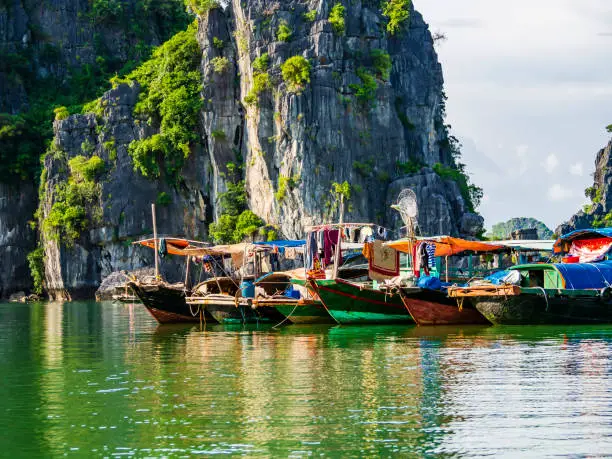
Morning:
Leave early for Ha Long Bay, a UNESCO World Heritage site known for its emerald waters and thousands of limestone islands. Board a traditional junk boat for an overnight cruise.
Afternoon:
Explore the bay, stopping at various islands and caves. Some cruises offer activities like kayaking or swimming in the bay’s serene waters. Visit the Surprising Cave (Hang Sung Sot) and Titov Island for panoramic views.
Evening:
Enjoy a seafood dinner on the boat as the sun sets, and relax under the stars. Overnight on the boat, surrounded by the tranquility of the bay.
Day 3: Return to Hanoi & Train to Da Nang
Morning:
Wake up to a breathtaking sunrise over Ha Long Bay. After breakfast, continue cruising around the bay before returning to the port.
Afternoon:
Head back to Hanoi. Depending on your time, visit the Temple of Literature, Vietnam’s first university, dedicated to Confucius.
Evening:
Board the Reunification Express train to Da Nang. This overnight train journey offers a unique glimpse into the countryside of Vietnam.
Day 4: Discovering Da Nang and Hoi An
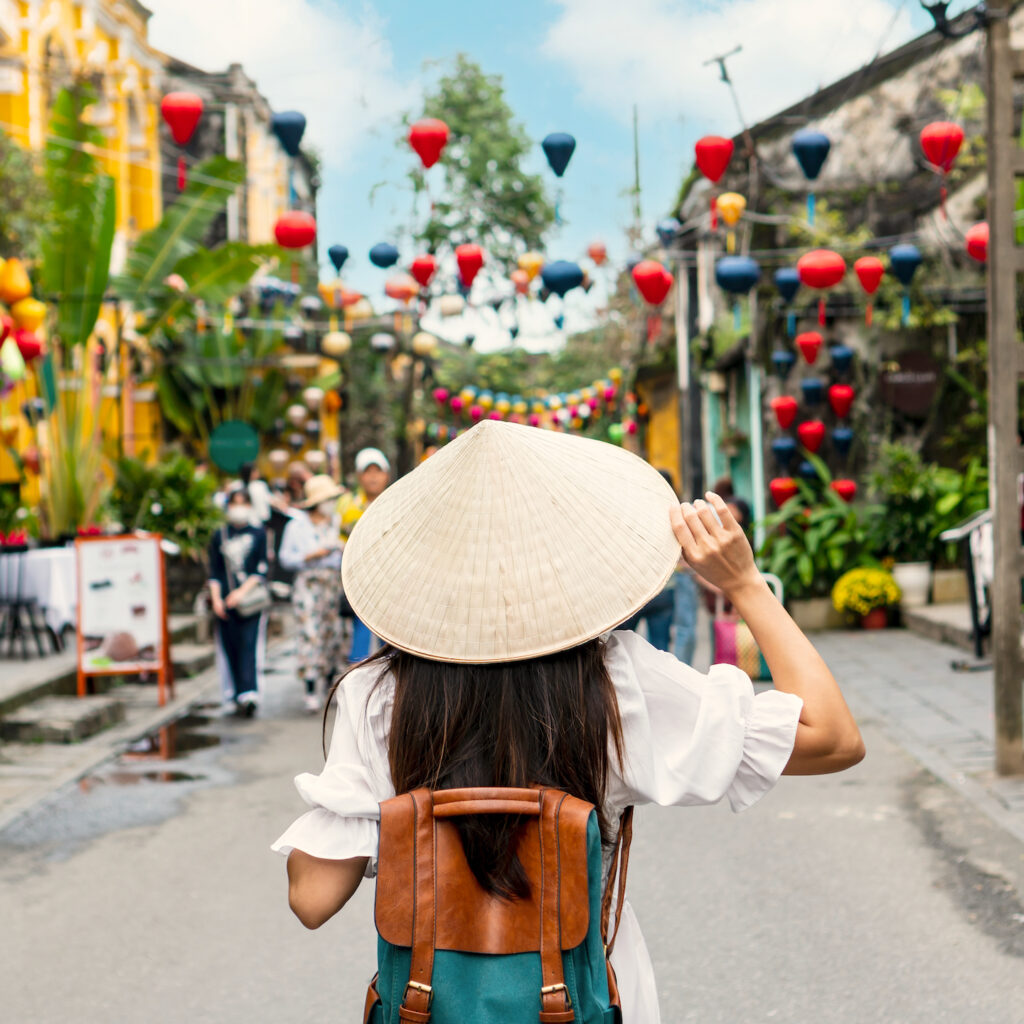
Morning:
Arrive in Da Nang and visit the Marble Mountains, a cluster of five marble and limestone hills. Explore the caves and pagodas, and take in the views of the surrounding area.
Afternoon:
Transfer to the ancient town of Hoi An, a UNESCO World Heritage site. Wander through the charming streets, visit the Japanese Covered Bridge, and explore the historic old houses and temples.
Evening:
Hoi An is famous for its lantern-lit streets in the evening. Enjoy a dinner of local specialties like cao lau (noodles with pork and greens) and wander along the Thu Bon River, soaking in the enchanting atmosphere.
Day 5: Hoi An to Ho Chi Minh City
Morning:
Take a morning flight from Da Nang to Ho Chi Minh City (Saigon). After checking in at your hotel, visit the War Remnants Museum to learn about the Vietnam War from a local perspective.
Afternoon:
Explore the Notre Dame Cathedral and the Saigon Central Post Office, two beautiful examples of French colonial architecture. Take a walk down Dong Khoi Street, a vibrant shopping area with a mix of modern and historic buildings.
Evening:
Experience the bustling nightlife of Ho Chi Minh City. Try a banh mi (Vietnamese sandwich) from a street vendor, and perhaps enjoy a drink at one of the rooftop bars offering panoramic views of the city.
Day 6: Mekong Delta Day Trip
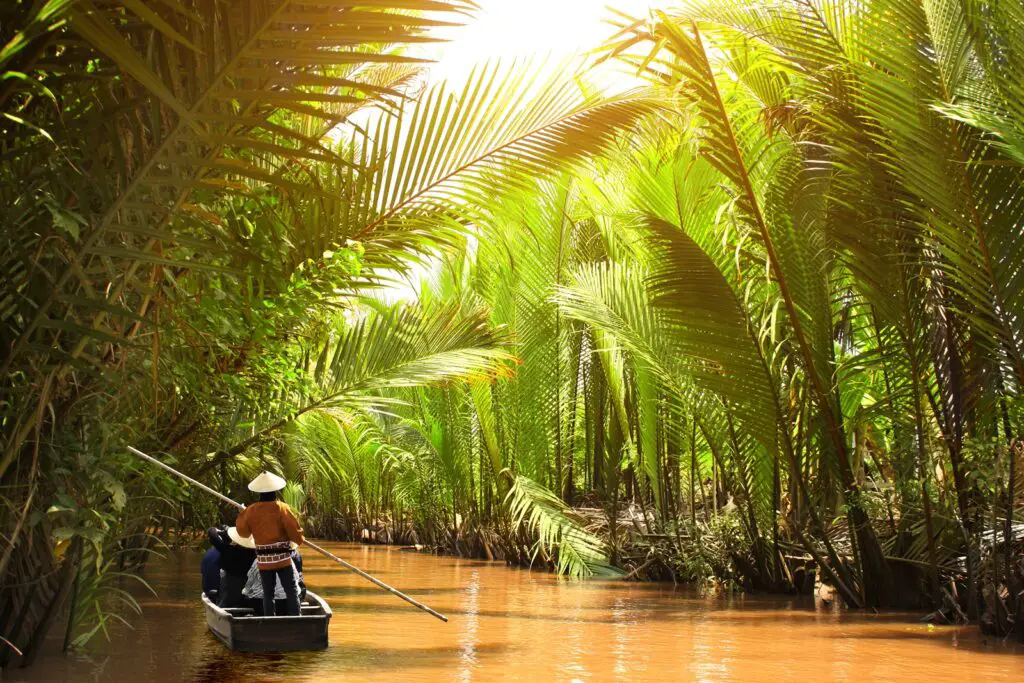
Morning:
Head out on a day trip to the Mekong Delta, known as the “Rice Bowl” of Vietnam. Explore the intricate waterways, visit local villages, and see how traditional products like coconut candy and rice paper are made.
Afternoon:
Continue exploring the delta, visiting floating markets and tasting fresh tropical fruits. Enjoy a peaceful boat ride through the canals, surrounded by lush greenery.
Evening:
Return to Ho Chi Minh City. For your final evening, treat yourself to a dinner cruise on the Saigon River, where you can enjoy local cuisine while taking in the city’s skyline.
Day 7: Departure
Morning:
Depending on your flight time, you might have a chance to visit the Cu Chi Tunnels, a vast underground network used by the Viet Cong during the Vietnam War, or do some last-minute shopping at Ben Thanh Market.
Afternoon:
Transfer to the airport for your departure, taking with you unforgettable memories of your 1-week journey through Vietnam.
Vietnam is a country that offers a little bit of everything—history, culture, nature, and adventure. This 1-week itinerary covers the highlights from north to south, giving you a taste of what makes Vietnam so special.
Whether you’re cruising in Ha Long Bay, exploring ancient towns, or navigating bustling cities, your time in Vietnam will be nothing short of extraordinary.
Additional Tips for Traveling in Vietnam
Best Time to Visit:
Vietnam’s climate varies from north to south, so the best time to visit depends on your specific itinerary.
Generally, the months from November to April are ideal, as the weather is cooler and drier. However, each region has its own peak season, so it’s worth checking the weather for your planned destinations.
Visa Requirements:
Depending on your nationality, you may need a visa to enter Vietnam. Some countries are eligible for visa-free entry for a limited period, while others can apply for an e-visa online. Make sure to check the latest visa requirements before your trip.
Currency and Payments:
The official currency is the Vietnamese Dong (VND). While credit cards are widely accepted in hotels, restaurants, and shops in major cities, it’s advisable to carry cash for small purchases and in more remote areas. ATMs are plentiful in urban areas.
Transportation:
Vietnam’s transport options are diverse, ranging from flights and trains to buses and motorbikes. Domestic flights are the quickest way to cover long distances, while trains offer a more scenic, albeit slower, alternative.
In cities, taxis, motorbike taxis (xe om), and ride-hailing apps like Grab are convenient for getting around.
Language and Communication:
Vietnamese is the official language, but English is widely spoken in tourist areas, especially in hotels, restaurants, and shops. Learning a few basic Vietnamese phrases can be helpful and appreciated by locals.
Food and Drink:
Vietnamese cuisine is renowned for its freshness, vibrant flavors, and variety. From street food stalls to fine dining restaurants, you’ll find an array of delicious dishes to try. Be cautious with street food if you have a sensitive stomach, and always drink bottled or filtered water.
Safety:
Vietnam is generally a safe destination for travelers. However, as with any country, it’s wise to take basic precautions, such as avoiding isolated areas at night and keeping an eye on your belongings, especially in crowded places.
Cultural Etiquette:
Vietnamese culture is influenced by Confucianism, so respect for elders and authority is important. When visiting temples or religious sites, dress modestly, covering your shoulders and knees. Always remove your shoes before entering someone’s home or a temple.
Souvenirs and Shopping:
Vietnam is known for its handicrafts, textiles, and souvenirs. Popular items include silk, lacquerware, and hand-embroidered goods. Haggling is common in markets, so don’t be afraid to negotiate, but do so with a smile and respect.
Sustainable Travel:
As tourism grows in Vietnam, it’s important to travel responsibly. Support local businesses, minimize your plastic use, and respect the natural environment by not littering or disturbing wildlife. Opt for eco-friendly tours and accommodations whenever possible.
Alternative Itineraries
If You Have More Time:
If you have more than a week, consider extending your trip to explore other regions like Sapa in the north for trekking and ethnic minority villages, or Phu Quoc Island in the south for pristine beaches and relaxation.
If You Have Less Time:
For travelers with less time, consider focusing on either the north or the south. For instance, a 4-day itinerary could include Hanoi, Ha Long Bay, and a quick trip to Ninh Binh, while another option could be to spend all your time in Ho Chi Minh City and the Mekong Delta.
Vietnam is a country of contrasts, where ancient traditions meet modern life, and natural beauty coexists with bustling urban centers. Whether you’re a history buff, a foodie, or an adventurer, Vietnam offers something for everyone. This 1-week itinerary is designed to give you a comprehensive taste of what the country has to offer, but it’s just the beginning of what could be a much longer love affair with Vietnam.
Packing Essentials for Your Vietnam Trip
When packing for Vietnam, it’s important to consider the country’s diverse climate and your planned activities. Here’s a list of essentials to ensure you’re well-prepared for your 1-week adventure:
Clothing:
Lightweight and Breathable Fabrics: The tropical climate in much of Vietnam can be hot and humid, so pack lightweight clothing that breathes well, such as cotton or moisture-wicking materials.
Layering Options: In the north, particularly in the winter months (November to February), temperatures can be cooler, especially in the evenings, so bring a light jacket or sweater.
Comfortable Footwear: If you plan to do a lot of walking or hiking, bring comfortable walking shoes or sandals. Flip-flops are handy for the beach and for easy wear around your accommodation.
Modest Clothing for Temples: When visiting religious sites, ensure you have clothing that covers your shoulders and knees. A lightweight scarf or shawl can also be useful for this purpose.
Travel Essentials:
Passport and Visa Documents: Ensure your passport is valid for at least six months beyond your date of entry into Vietnam. Bring copies of your visa or e-visa confirmation.
Travel Insurance: Having travel insurance is essential in case of medical emergencies, trip cancellations, or other unexpected events.
Adapter and Power Bank: Vietnam uses Type A, C, and D power sockets. Carry a universal adapter, and a power bank is handy for keeping your devices charged while on the go.
Reusable Water Bottle: Staying hydrated is important, especially in hot weather. Bring a reusable water bottle and refill it with filtered water to reduce plastic waste.
Health and Safety:
Medications and First Aid Kit: Bring any prescription medications you need, along with a basic first aid kit that includes band-aids, antiseptic wipes, and any over-the-counter medications you might need, such as pain relievers or antihistamines.
Insect Repellent: Mosquitoes can be a nuisance, especially in rural areas and near water, so pack an insect repellent with DEET.
Sunscreen and Hat: Protect yourself from the strong sun, particularly when exploring outdoor sites or relaxing on the beach.
Hand Sanitizer and Wet Wipes: These are useful for maintaining hygiene, especially in areas where clean water and soap may not be readily available.
Travel Gear:
Daypack: A small backpack is perfect for day trips and excursions. Choose one that’s comfortable to wear and big enough to carry your essentials, such as a camera, snacks, and water.
Camera: Vietnam is incredibly photogenic, so you’ll want to capture the memories. Whether it’s a professional camera or just your smartphone, make sure it’s ready to document your journey.
Travel Guidebook or Map: While GPS and travel apps are convenient, a physical map or guidebook can be useful in areas with poor reception or if you want a more detailed look at specific regions.
Navigating Vietnam: Cultural Tips and Etiquette
Understanding the local culture and customs can enhance your travel experience in Vietnam. Here are some cultural tips to keep in mind:
Greetings and Interactions:
A common greeting in Vietnam is a slight bow, often combined with a handshake, especially in formal settings. When greeting someone, it’s polite to smile and use both hands if shaking hands.
The Vietnamese people are generally warm and hospitable. A friendly attitude and a few words of Vietnamese, such as “Xin chào” (hello) and “Cảm ơn” (thank you), will go a long way in making connections.
Dining Etiquette:
When dining with locals, wait to be seated and don’t start eating until the oldest person at the table has begun.
Chopsticks are commonly used, and it’s considered impolite to point your chopsticks at someone or stick them upright in a bowl of rice, as this resembles incense sticks used at funerals.
Tipping:
Tipping is not mandatory in Vietnam, but it is appreciated in the tourism and service industries. A small tip for good service at restaurants, hotels, or with tour guides is a nice gesture.
Photography:
Always ask for permission before taking photos of people, especially in rural areas or at religious sites. Many people are happy to be photographed, but it’s respectful to ask first.
Environmental Responsibility:
Vietnam is working towards more sustainable tourism, so travelers are encouraged to minimize their environmental impact. Avoid using single-use plastics, participate in responsible tours, and be mindful of your waste.
FAQs: Planning Your Trip to Vietnam
Q: Is it safe to travel alone in Vietnam?
A: Yes, Vietnam is generally a safe destination for solo travelers. The people are friendly, and incidents of serious crime are rare. However, like anywhere else, it’s important to stay vigilant, especially in crowded areas, and keep your valuables secure.
Q: How much money should I budget for a week in Vietnam?
A: Vietnam is known for being a budget-friendly destination. Depending on your travel style, you can expect to spend between $300 to $700 USD per person for a week, covering accommodation, food, transport, and activities. Luxury options will, of course, increase the budget.
Q: What is the best way to get around in Vietnam?
A: The best mode of transportation depends on the distance. For long distances, domestic flights are the quickest. Trains are scenic but slower, while buses are the most economical. In cities, motorbikes, taxis, and ride-hailing apps like Grab are convenient.
Q: Do I need any vaccinations before traveling to Vietnam?
A: It’s recommended to check with your doctor before traveling, but common vaccinations include those for hepatitis A and B, typhoid, and tetanus. Depending on your travel plans, malaria prophylaxis may be advised.
Q: Can I use US dollars in Vietnam?
A: While US dollars are accepted in some tourist areas, especially in hotels and larger shops, it’s best to use Vietnamese Dong for everyday transactions. ATMs are widely available for withdrawing local currency.
Vietnam is a country that leaves a lasting impression with its mix of historical landmarks, vibrant culture, and natural beauty. Whether you’re savoring a bowl of pho in Hanoi, cruising through the karst landscapes of Ha Long Bay, or delving into the bustling life of Ho Chi Minh City, each day offers new experiences and memories.
This 1-week itinerary aims to give you a taste of the country’s diverse offerings, but the warmth of its people and the richness of its culture may just inspire you to return for a longer stay. As you prepare for your journey, remember to stay flexible, embrace the unexpected, and let Vietnam’s unique charm guide your adventure.
